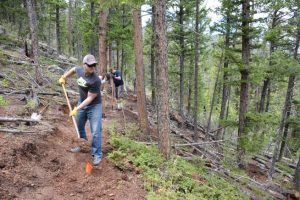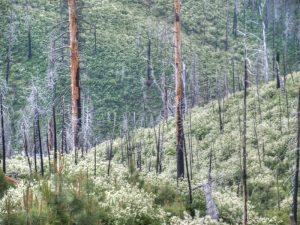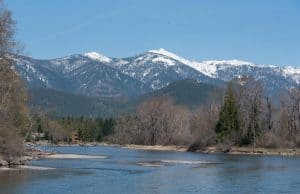Two existing but unauthorized recreational trails will be considered for inclusion in the Black Hills National Forest’s official non-motorized trail system. But the trails were apparently blazed by users rather than Forest Service officials, and neither trail is considered part of the forest’s official trail system.
Just two years ago, the then-ranger of the Forest’s Mystic District, Ruth Esperance, threatened to criminally prosecute builders of unauthorized trails. The threat provoked a backlash among trail users, especially in the mountain-biking community, who accused forest officials of longstanding inaction on proposals for new trails.
In other words, they got tired of waiting and just decided to do it themselves, and the Forest Service is about to sanction that. Meanwhile, four other proposed trails were set aside for now by Forest Service officials, who considered a total of six proposed trails as part of a new trail-proposal process that was created in August. They were not approved because of unacceptable impacts.
Van Every identified numerous problems with the Storm Mountain and Victoria Lake trails. “Issues include routes through documented cultural sites, crossing private property, permitting bicycles on the historic Flume Trail where they are currently not authorized, crossing a major highway, fence crossings in the Foster Gulch area, lack of parking, and potential conflict with big game winter range,” Van Every wrote… Furthermore, Van Every wrote, the Paha Sapa trail goes through the Norbeck Wildlife Preserve, where trail miles are limited by the Black Hills National Forest’s management plan.
For the two trails that were advanced for further review, several more steps in the process remain, including environmental reviews in accordance with the National Environmental Policy Act.
Well, this kind of points out the problem with this approach – these trails are already there and impacts have already occurred. The reason the Forest Service doesn’t “just do it” is because there are resources they are charged with protecting that they are required by law to consider BEFORE they decide to do it. But here is a great way to shortcut the process, and ignore legal requirements; just look the other way. The users could have funded the environmental analysis needed to proceed, but instead extra-legal “self-help” is apparently being rewarded.
Maybe this new process of “build it, then ask for it” will become the model for other places where the Forest Service doesn’t act fast enough on trails or other developments (or maybe even where they’ve already said “no”). Maybe national forest neighbors (or their governments) will start using this approach to cut down trees on public lands that they consider a fire risk, or maybe they’ll burn them. (This actually reminds me of the “shovel brigade” that rebuilt a Forest Service road in Nevada after a flood, which damaged bull trout habitat, but there the Forest Service at least resisted it.)




